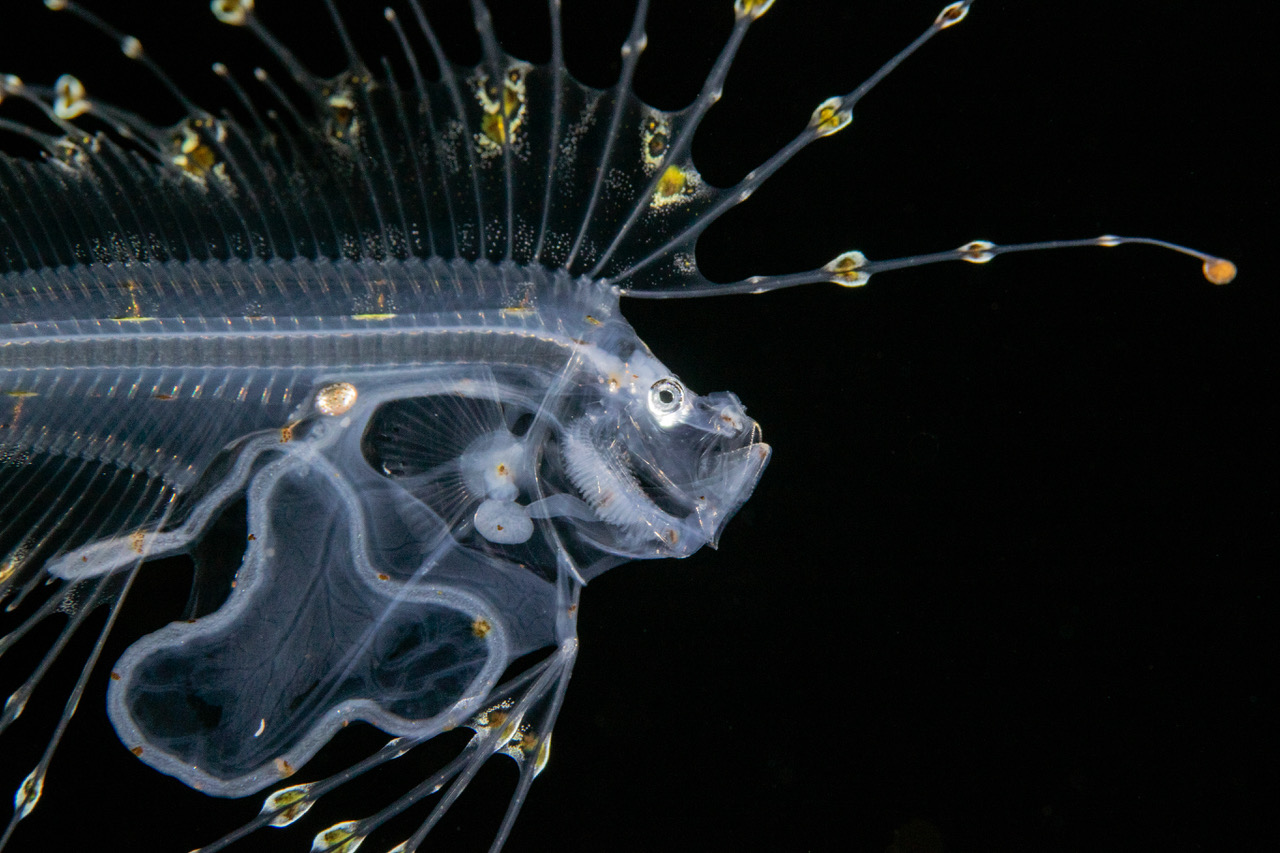
Meet the Ocean’s Remarkable See-Through Animals
David Haddock and Sönke Johnsen on the Secret Lives of Iridescent Undersea Creatures
Both of us have been on many scuba dives in the open sea. Doing so requires training, followed by medical exams and piles of forms, and involves a lot of work, planning, and money. A big ship is needed to get out to sea, and then a small boat to travel a further couple of kilometers to dive safely. When we are finally beneath the surface, at first all we see is water.
After a few minutes, if we’re lucky, we start to notice faint objects slowly moving by. Some are as small as our fingernails, some are as large as our fists, and others are in chains that can be many meters long. A few are pinkish and more obvious, especially if they are on the larger side, but most are so clear that it’s hard to see them at all. When we do manage to get a good look at them, the animals seldom look like anything we’ve seen on land or on the seafloor, even though they’re related to these animals. Snails can look like little elephants, slugs can look like fish, and worms can look like swimming chandeliers. These animals, so rarely seen by humans, are actually some of the most abundant on the planet.
But not only is it hard to get out to where they are, they can still be almost impossible to see, even when we’re right in front of them.
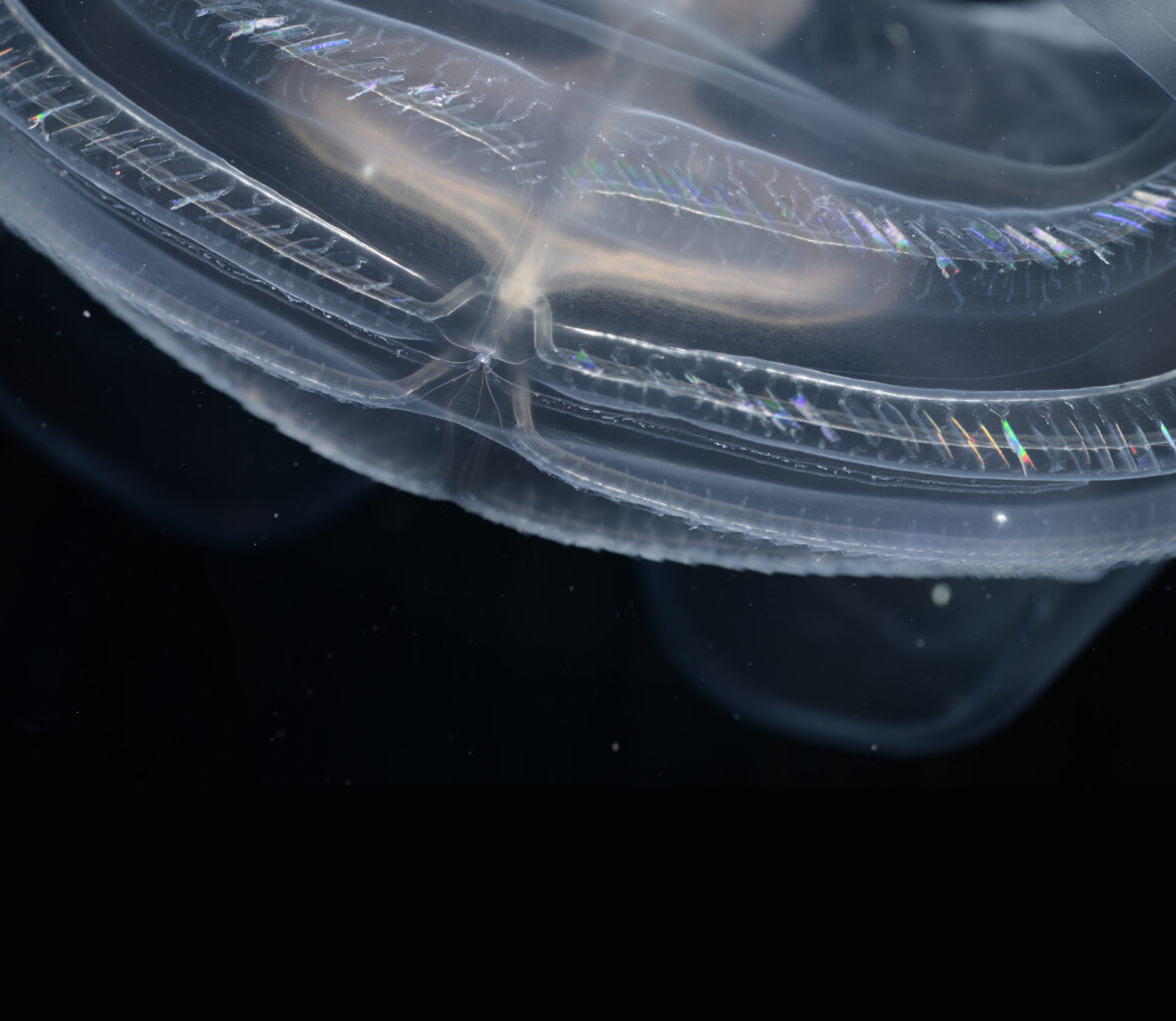
While images of deep-sea fish and squid are fairly common, it’s seldom appreciated that many of the animals in the open sea are essentially invisible. Whole-body transparency is perhaps the ultimate way to hide, because light simply passes through the animals as if they aren’t there. A vast array of animals do this. The first set are often referred to as the gelatinous zooplankton (because much of their bodies appear to be made of a gelatinous material). The most familiar of these are the jellyfish, which we sometimes see (and dread to see) in waters near shore, or even washed up on the beach.
But not only is it hard to get out to where they are, they can still be almost impossible to see, even when we’re right in front of them.
Those we are most familiar with, known as the scyphozoans, are usually the least transparent. This group includes the moon jellies, sea nettles, cannonball jellies, and many others. However, there is a more diverse group of jellyfish, the hydromedusae, that tend to be smaller and far clearer.
Closely related to this group are the siphonophores, which range from small animals being moved along by one or two pulsing chambers to large, complex animals, which can be seen as either a colony of different types of members or as one animal with organs that do different things.
In addition to the jellyfish, we have ctenophores (comb jellies) that superficially look like jellyfish but are less closely related to them than we are. Most of them are astonishingly clear, though a few are milkier or even red at depth (some of the red ones have clarity like a ruby). What unites them all are comb rows, which are made of stacks of little hairs (cilia) that row together to propel the animal through the water.
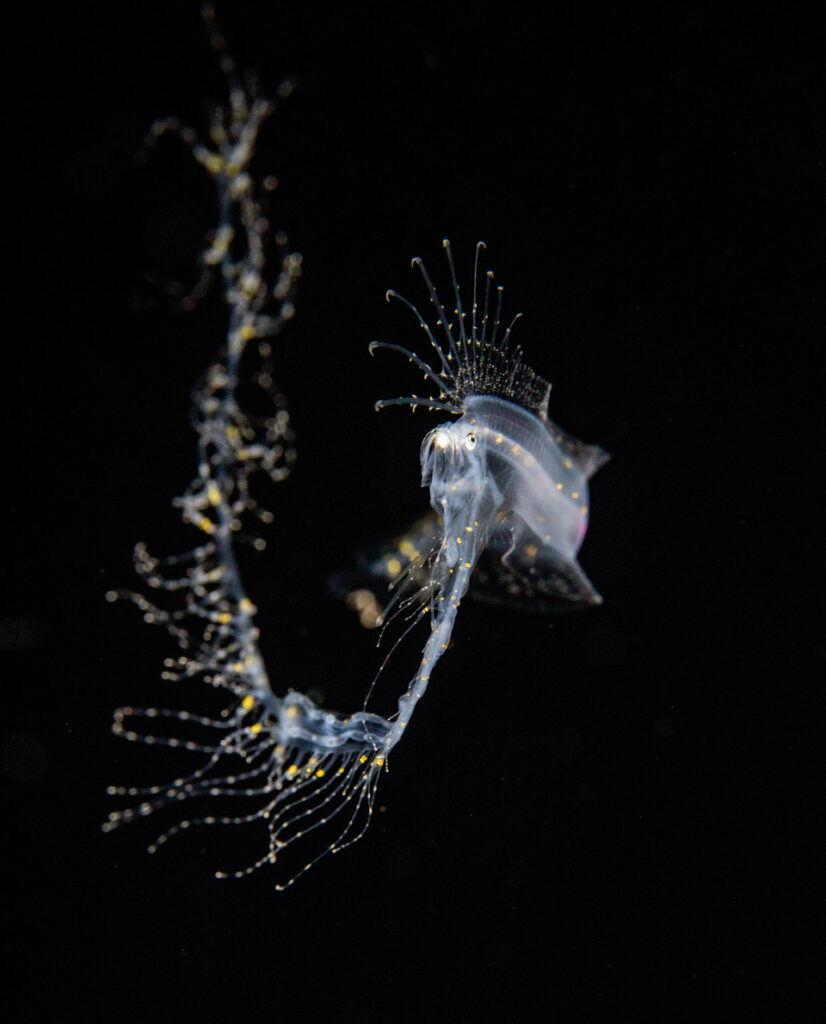
Then there are the wild swimming forms of animals we usually think of as earthbound: the snails and worms. As mentioned above, they look nothing like their terrestrial and seafloor relatives but are instead evolved to spend their lives invisibly wafting through the ocean. As with the jellyfish and ctenophores, many of these lose their transparency at depth, becoming red over at least part of their bodies. At the depths where scuba divers travel, however, they are gloriously clear. Some swimming snails have lost their protective shells (more like swimming slugs), while others retain them. As a result, they must continue to flap, with almost comical enthusiasm, to avoid sinking into the abyss.
Not all transparent animals are gelatinous; the upper ocean is also full of transparent crustaceans of all kinds. These are related to crabs and lobsters, but spend their whole lives up in the water. In the shallower reaches of the ocean, they are often transparent. Some of the largest and most impressive are the hyperiid amphipods, which can be as big as the palm of your hand and so clear that you can barely tell they are there, even if they are in a bucket right in front of you.
There are also many transparent fish, especially the young forms of opaque adults. Perhaps the most striking are the leptocephalus larvae of eels, which look like long, thin leaves and are so clear you can read a book through them.
Finally, we have transparent animals that are not closely related to anything most people have seen. The most numerous of these may be the chaetognaths (arrow worms), which are found in tremendous numbers in the open ocean, especially near the surface. As their common name implies, they look like short, thick arrows, complete with fins that resemble feathered wings. Again, while a couple of species have colored stomachs, in the sunlit parts of the sea they are usually extremely clear.
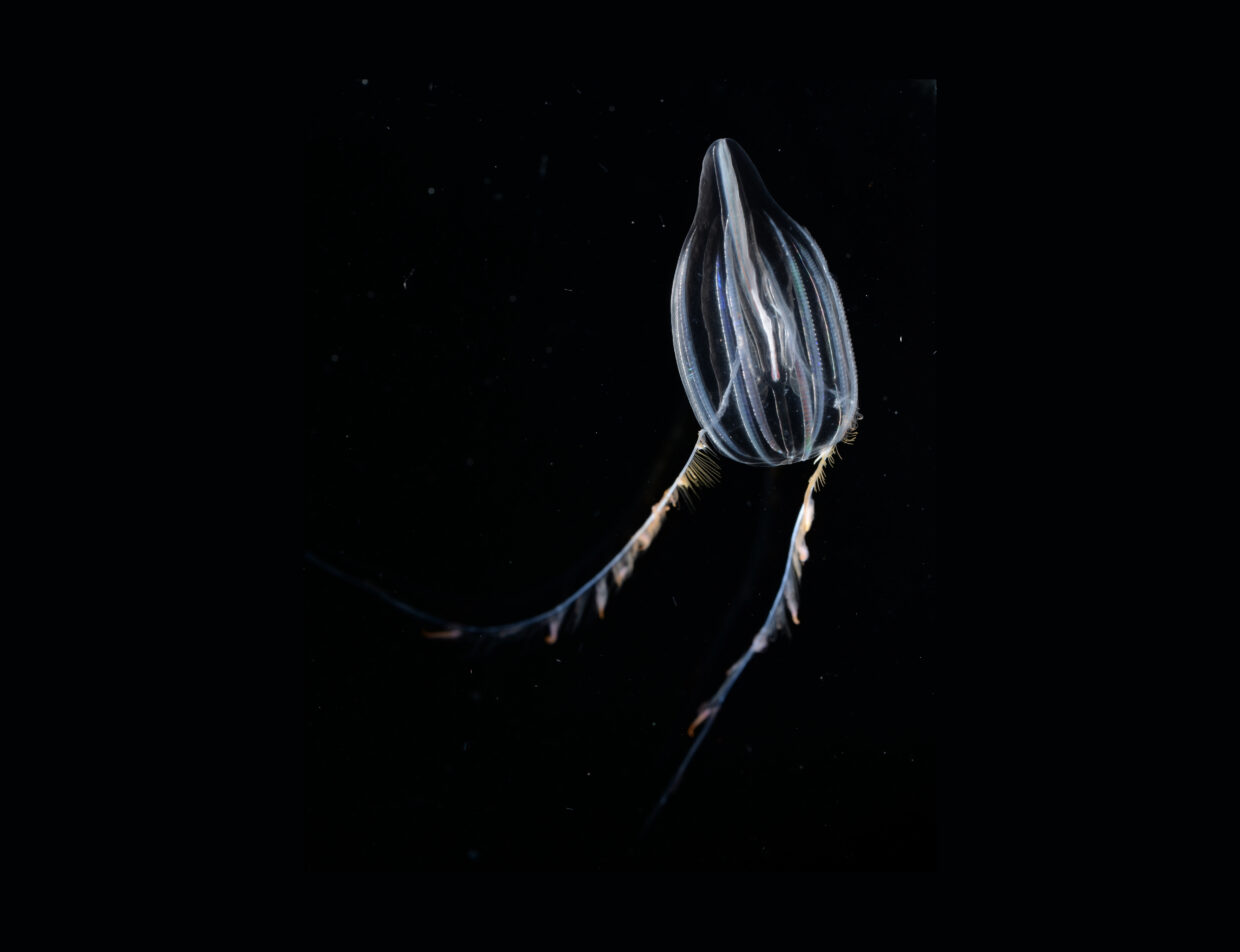
The upper reaches of the ocean house a diverse menagerie of swimming and floating animals that are remarkably clear, with many of these animals having red versions at depth. These animals were not well appreciated by earlier oceanographers that used nets, because the nets would shred them beyond recognition. But they are abundant in nearly all parts of the ocean. If you go into the water out there, they will be around you, even though you can’t quite see them. When we scuba dive to collect them, we often have to get the sunlight just at the right angle, or use another diver’s dark wetsuit as a backdrop, because against the diffuse blue they utterly vanish.
The first trick to being a seagoing transparent organism is to make your insides clear.
In contrast to the abundance and diversity of transparency in the ocean, it’s rare on land and on the seafloor. The most familiar transparent tissues to us are the corneas and lenses of our eyes. Both of these tissues are heavily modified to be clear. The cornea is a perfect alternating stack of tiny fibers that is so regular that light goes right through it, and the cells of the lens have lost nearly all their internal structures (organelles), leaving only a soup of almost identical proteins that don’t interfere much with the passage of light. In both cases, there is no way these two tissues could survive without the rest of our body keeping them alive and in good condition. (The cornea isn’t even really alive, but a fancy and very well cared-for sheet of tendon.)
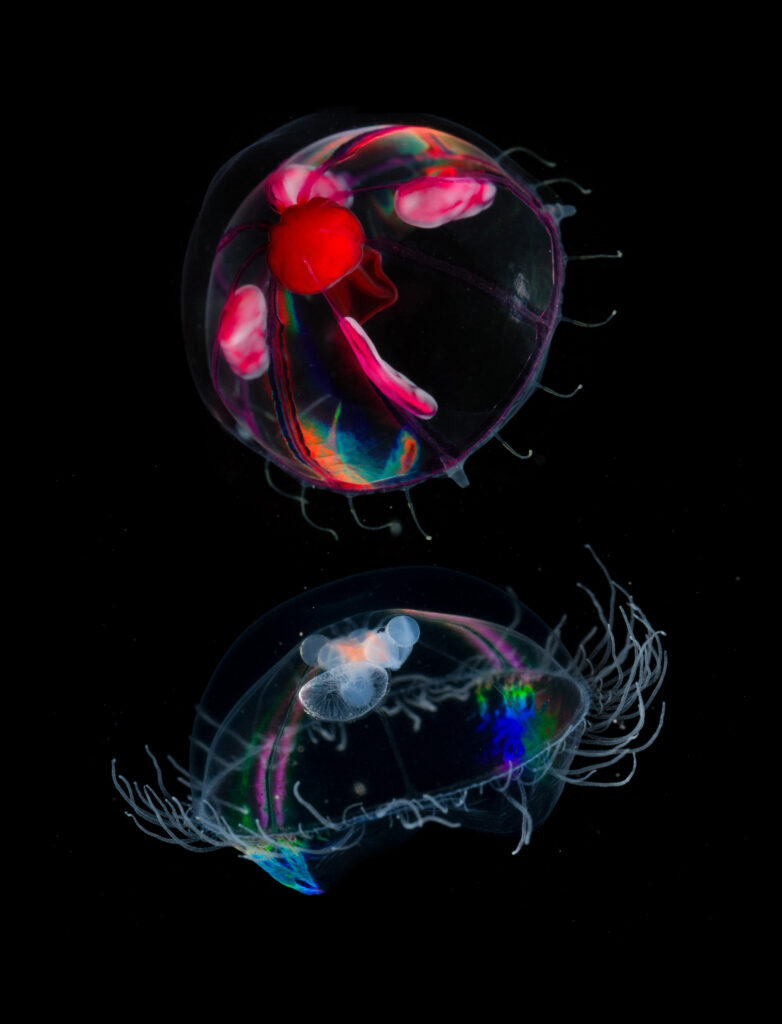
It is hard to imagine how an animal could modify the tissues of its whole body to be transparent when we can only manage to keep such a small part of our own bodies clear. When the clarity of our lenses starts to fail, we suffer from cataracts that cloud or even blind our vision. The lenses of deep-sea fish are also especially susceptible to clouding, in the same way that egg whites go from clear to opaque when hard-boiled. Nearly all the photos you see of deep-sea fish have milky white eyes, because their eyes don’t stay happy for very long once brought out of their habitat.
The first trick to being a seagoing transparent organism is to make your insides clear. One might think that simply getting rid of colorful pigments should do the job, but getting the red pigment out of a steak would not make it clear, for example. There are many substances, such as snow, clouds, and milk, that don’t have light-absorbing pigments but are still opaque. We can’t see through them because light gets scattered, not absorbed, as it passes through.
Think of a ball rolling across a pool table: it can bounce off the other balls and keep going (scattering) or at some point it may fall into a pocket (be absorbed). When light moves from one material to another, it usually scatters, which means it bends, bounces, or reflects. Any moderately sized animal has all sorts of internal complexity in the form of organs, nerves, and blood vessels, and so even without light-absorbing pigments, it will be milky or opaque. The light just bounces around inside and won’t make it straight through.
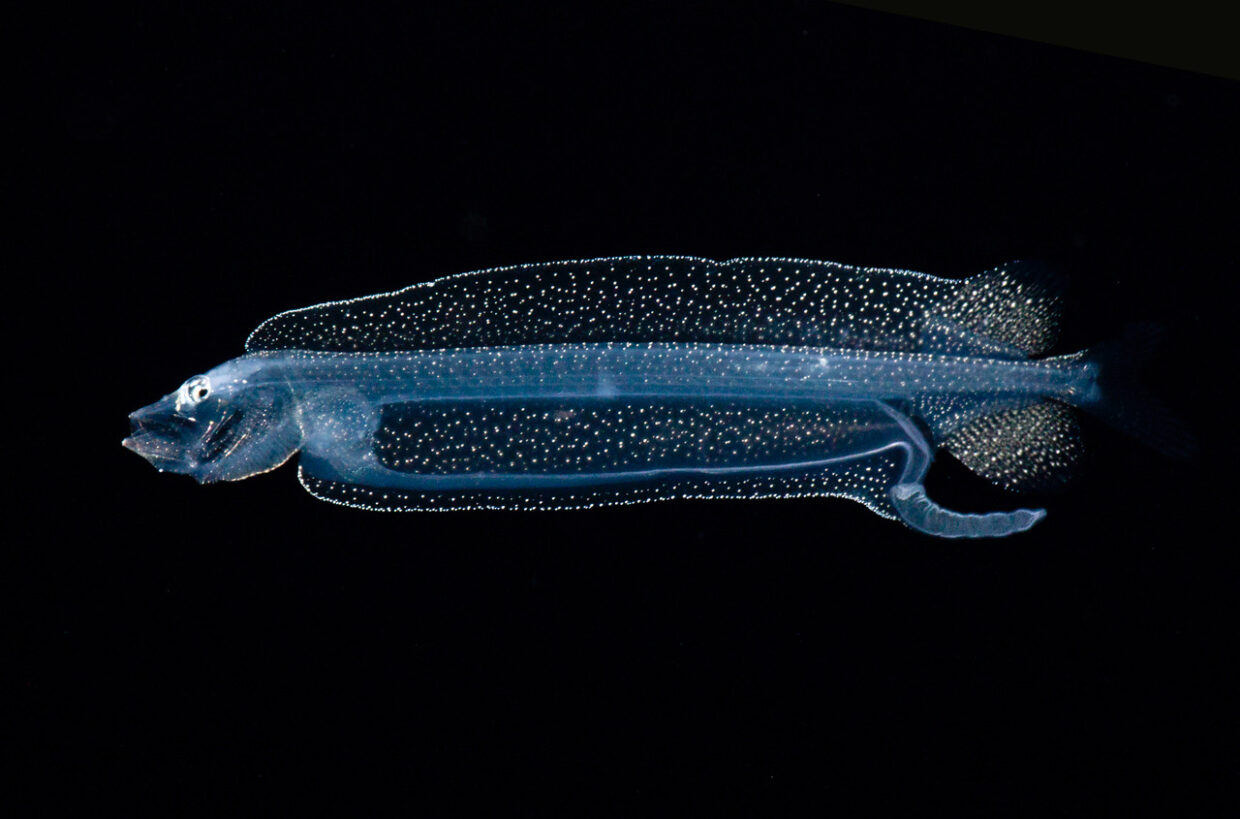
In the same way that eye lenses and corneas are composed of simplified tissues, many transparent ocean animals also fill much of their insides with gelatinous material or fluid. Many also make their bodies very flat, so the path through the inside is short. Some, like many jellyfish and swimming snails, consist of a thin layer of cells wrapped around a large nonliving ball of gelatinous material. They likely employ other tricks as well—we just don’t know yet.
Together, all these adaptations allow animals to be transparent over much of their bodies, perhaps stuffing the few remaining opaque parts into mirrored bags.
Even the clearest object can be given away by reflections of light from the surface. An ice cube is a good example: the ice itself can be clear, but its shape is made obvious by all the light reflected from its surface. This is worse when a surface is complex—as you see in crustaceans—or in the air. This last issue is probably one of the main reasons why we don’t see many transparent animals on land—it’s easier for tissues to match the properties of water than it is to match air alone. Some transparent animals have solved this problem by covering their surfaces with anti-reflection coatings. These are much like the coatings on your sunglasses and camera lenses, except that they may be alive.
Eyes, stomachs, and reproductive cells present three other challenges to being completely transparent. Eyes need to absorb light to see, and stomachs contain food, which may either be opaque or glowing.
A solution for both is to use mirrors to hide them. Despite how shiny a mirror may appear on land, in the open ocean it would mainly reflect more ocean, which looks pretty much the same in all directions. So, many transparent animals will put their digestive organs and eyes in iridescent mirrored bags that make them much harder to see, even though they’re opaque. Reproductive cells, such as eggs, are already reduced to the essential components, so they may not be able to alter or simplify their composition. Some comb jellies are totally clear until they mature, and then the canals containing their sperm and eggs show up as a filigree of stark white lines across their bodies.
Together, all these adaptations allow animals to be transparent over much of their bodies, perhaps stuffing the few remaining opaque parts into mirrored bags. It’s a remarkable feat of evolution.
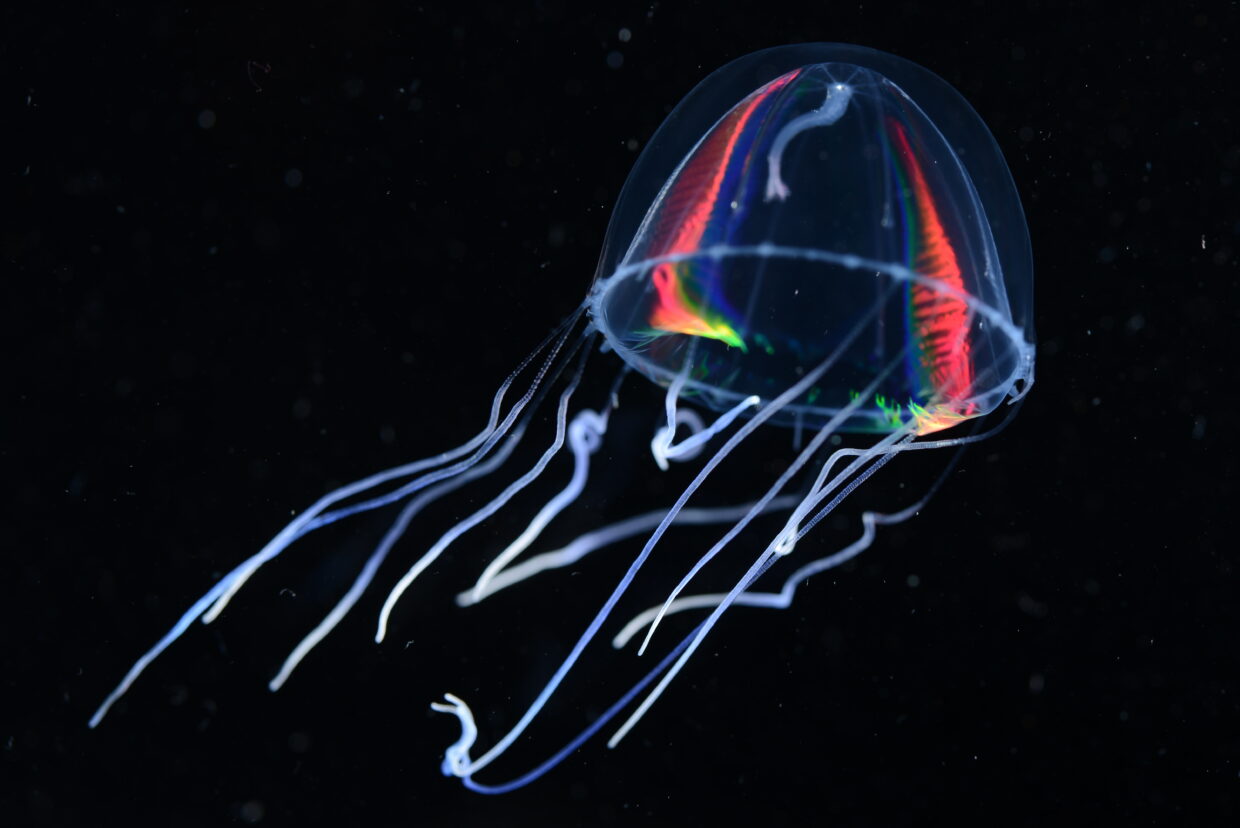
Finally, there are animals that are normally transparent, but become milky white in places only after you touch them. One of the best examples of this is the ctenophore Cestum, or the Venus girdle. It is normally quite clear, but within a few seconds of it being touched, its surfaces become frosty white. Other animals, including certain siphonophores and swimming snails, do this as well, but only over parts of their bodies. For example, the swimming snail Corolla develops white spheres all over its normally transparent (and gelatinous) shell. Some boxy siphonophores only become opaque along their edges.
Research has shown how some of these animals do this, but the question remains: why? The main idea is that the sudden appearance of the animal scares away any predator or unwanted interloper, much like the decloaking of a warship in a science fiction show. The truth—as is so often the case with the ocean—is that we don’t know for sure.
__________________________________
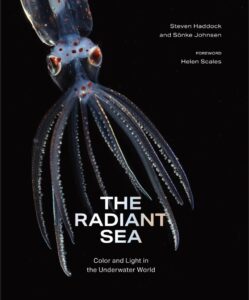
From The Radiant Sea: Color and Light in the Underwater World by Steven Haddock and Sönke Johnsen. Used with the permission of the publisher, Abrams Books. Copyright © 2025 by Steven Haddock and Sönke Johnsen.
Steven Haddock and Sönke Johnsen
Steven Haddock studies marine diversity, molecular biology, and bioluminescence at the Monterey Bay Aquarium Research Institute and the University of California, Santa Cruz. Documenting creatures in the deep sea and capturing their luminescent displays, many for the first time, he aims to increase an appreciation and understanding of the ocean’s inhabitants. His imagery and research have been featured in National Geographic, the New York Times, and BBC documentaries, among many others. His other books include the manual Scientific Blue-water Diving and the textbook Practical Computing for Biologists. Sönke Johnsen first trained in math and art and has studied light in nature for 33 years, the last 22 of which have been at Duke University. He is particularly interested in vision, signaling, and camouflage in the open sea. His field work primarily involves open-ocean research cruises that use scuba and deep sea manned and robotic submersibles. Johnsen’s research has been featured in the movie Finding Nemo, the Magic Tree House book series, the poetry of John Updike, and the humor of Dave Barry.












